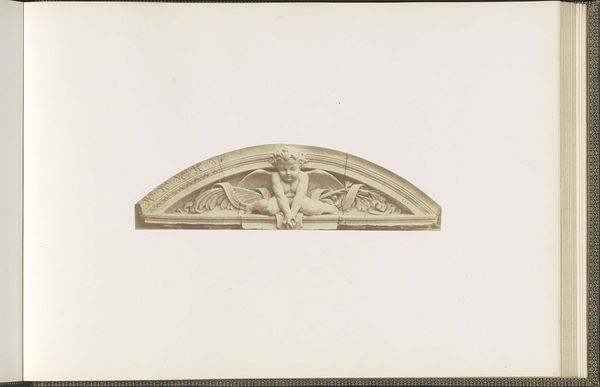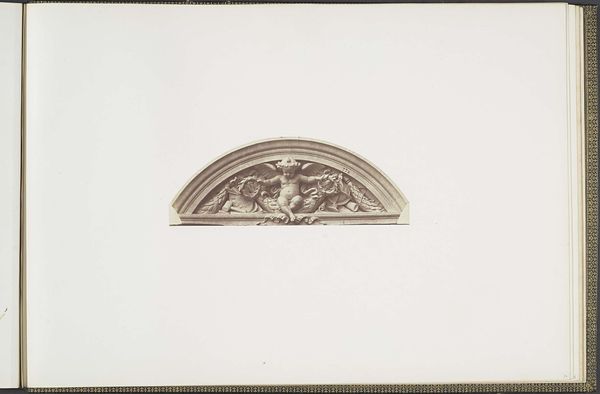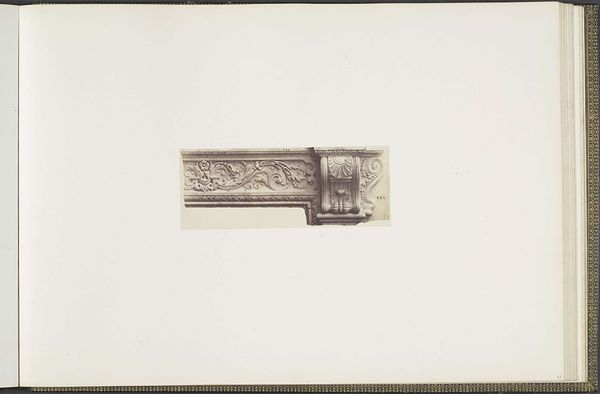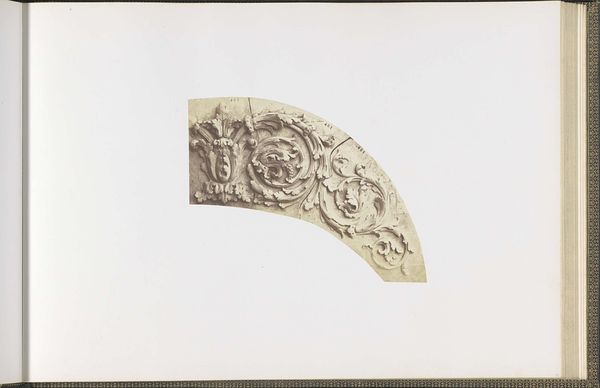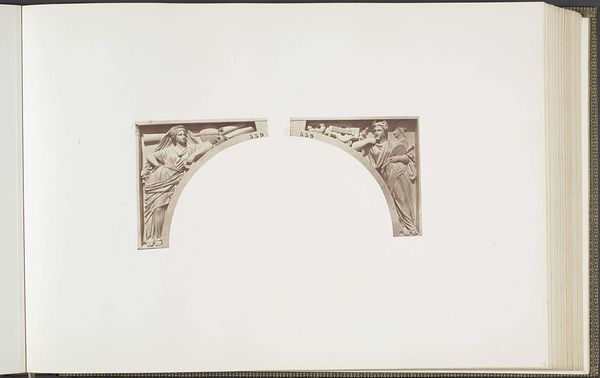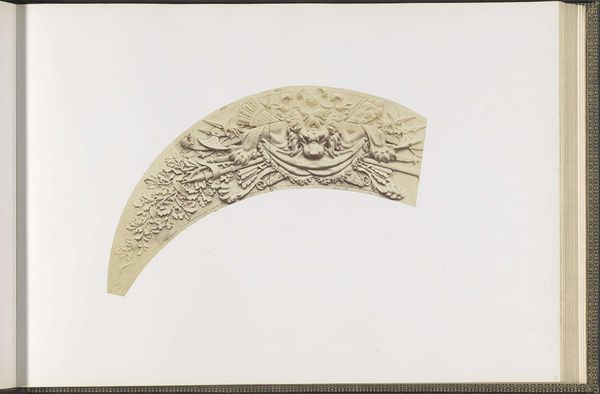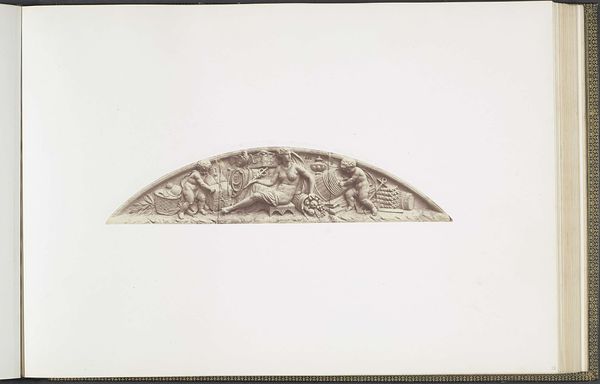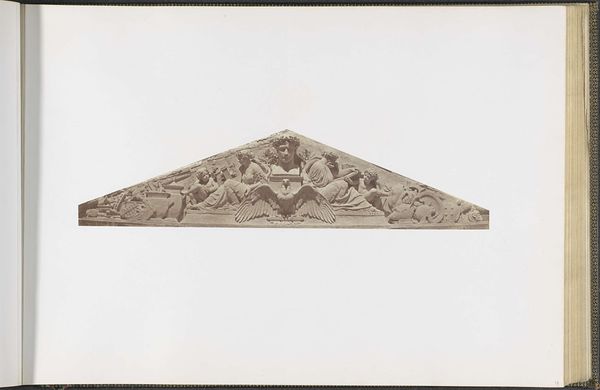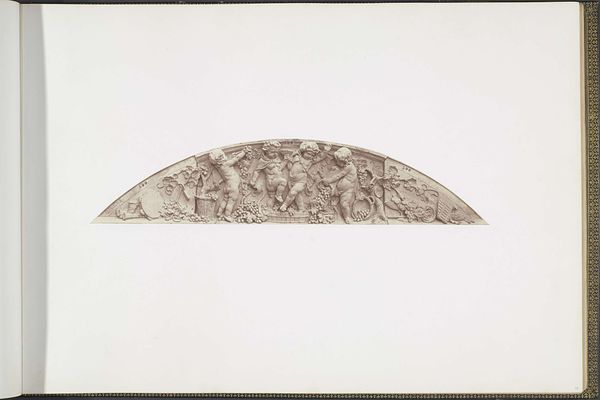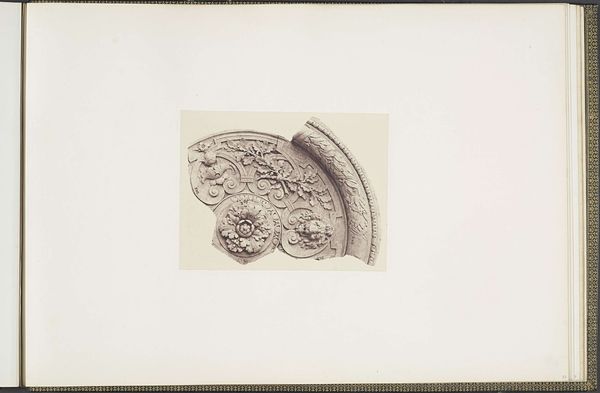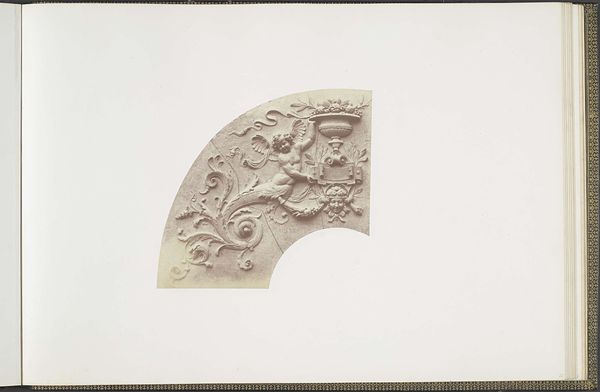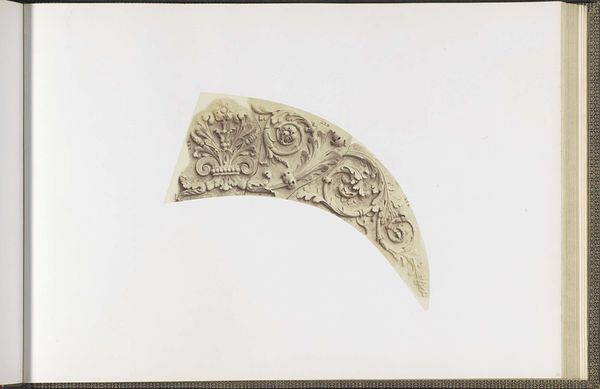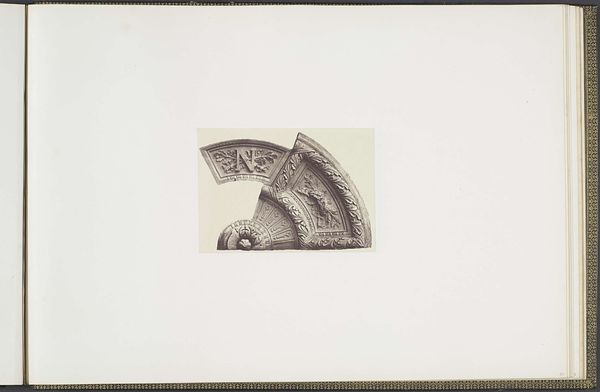
print, photography, sculpture, marble
#
portrait
#
16_19th-century
# print
#
classical-realism
#
photography
#
coloured pencil
#
sculpture
#
history-painting
#
marble
Dimensions: height 378 mm, width 556 mm
Copyright: Rijks Museum: Open Domain
Editor: Here we have Édouard Baldus' photograph, "Gipsmodel voor beeldhouwwerk op het Palais du Louvre," taken sometime between 1855 and 1857. It depicts a plaster model for a sculpture that would adorn the Louvre. What strikes me is how this photograph immortalizes a transient object, a stepping stone in the creation of something monumental. How do you see this photograph, considering the context of the Louvre? Curator: That's a fascinating point about the transient nature of the subject. Baldus wasn't just documenting a sculpture; he was capturing a moment within a larger political and cultural narrative. The Louvre, as a symbol of French power and artistic heritage, was undergoing significant renovations during this period. This photograph becomes a document of that process, highlighting the labor and design involved in constructing national identity through architecture and art. What do you think about the seemingly classical imagery when seen through a 19th-century lens of empire and revolution? Editor: I guess I hadn't thought about the sculpture within the photograph as reinforcing those specific values... Maybe I was just caught up on its aesthetic qualities alone. Curator: Precisely! Baldus's photograph prompts us to consider whose stories are being told, and whose are being marginalized in this visual construction of national pride. The classical aesthetic often served as a visual language legitimizing power structures. Reflect on the choice to represent these sculptures through the relatively new medium of photography. Who was this image intended to reach and what purpose would it serve? Editor: That makes me think about how photography itself was evolving as a tool for documentation, but also for shaping perceptions of art and power. It’s more than just a neutral record. I appreciate you contextualizing what can appear as merely representational, and how Baldus was subtly highlighting 19th century socio-political values and power through what he chose to photograph and how. Curator: Exactly. Understanding the image requires situating it within the power dynamics of its time, recognizing how art, architecture, and photography intertwined to construct narratives of nationhood, class, and identity.
Comments
No comments
Be the first to comment and join the conversation on the ultimate creative platform.
